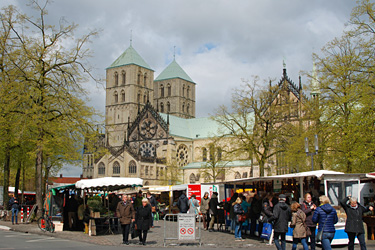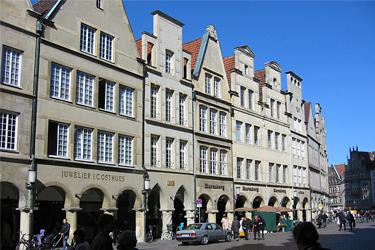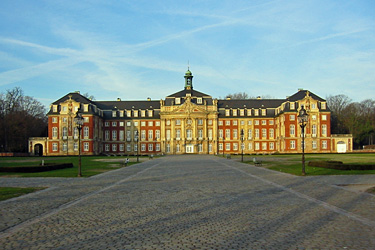Münster - A city between services and agriculture






The city of Münster is the capital of the correspondent administrative district in the federal state of North Rhine-Westphalia. From 1815 to 1946, Münster was the capital of the former Prussian province Westphalia. With a population of more than 310,000 people it is the 20th biggest city in Germany.
Münster is the seat of a catholic bishop. In 805 St. Ludgerus was consecrated as Münster’s first bishop. His 76th successor Felix Genn holds this position since 2009.
Münster emerged from an old Saxonian settlement, where bishop Ludgerus founded a monastery in 793. Münster obtained its city rights in 1190. Further outstanding events of the city’s history include the declaration of the kingdom of the Baptist movement and the Peace of Westphalia in 1648.
Münster is famous for its numerous bicycles and for its partially reconstructed ancient urban district, which was heavily destroyed during World War II. The city centre and especially the renowned “Prinzipalmarkt” were reconstructed again. The landscape around Münster is very flat. It’s biggest lake Aasee is located on the borders of the city centre. Münster has got several theatres and museums. The city is the setting of the TV show “Tatort“, which reaches the highest viewing figures among all series of criminal fiction on German TV.
With nearly 60,000 students, Münster belongs to the ten biggest university cities in Germany. Münster offers a lot of jobs in the service industries, however traditional industries are comparatively rare. Instead of that, Münster possesses various administrative authorities and courts. However, this medieval and more than 1,200 year old city with its endless amount of historic sites also possesses the biggest agricultural surface among all district-free cities in Germany, which covers an area of 13,865 hectares. 350 farmer families cultivate their fields, pastures and croplands.


 De
De